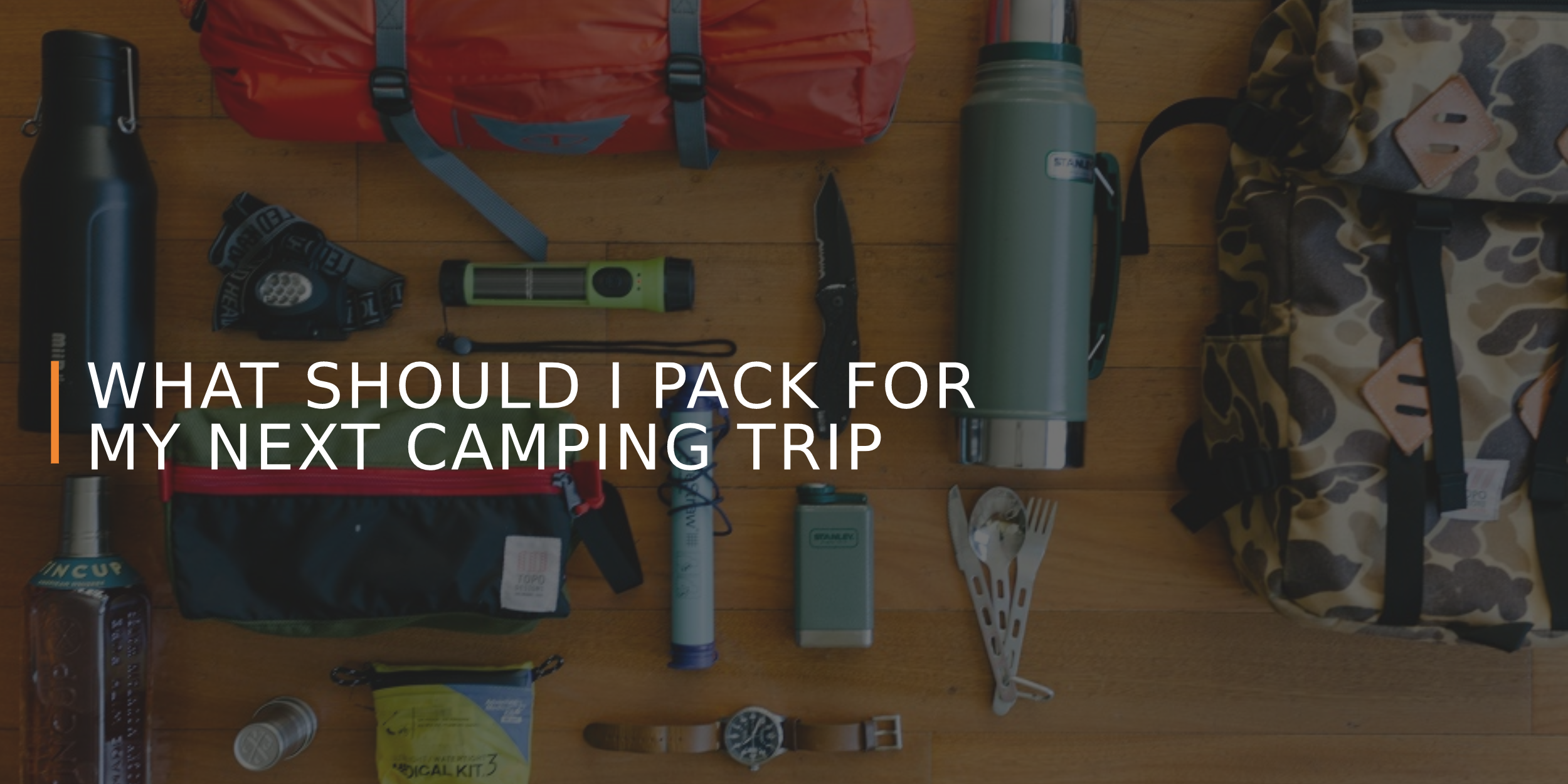What Should I Pack for My Next Camping Trip?
Ahhh, the great outdoors. Nothing like it.
We love adventure here at Groove Life and camping is a natural part of hitting the trail.
The biggest mistake a camper can make is failing to use a packing list when they prepare for their outdoor adventure.
Even the seasoned camper is bound to forget one of the essentials.
So, we at Groove have come up with a list of what to pack for your next camping trip. The list includes all the necessities and a few items to make your trip more comfortable.
Click to Download Your Camping Checklist Here!
Lighting
Let’s face it, no matter how well you plan, you will inevitably arrive at your campsite after sunset. Setting up a tent, getting a fire going, and starting to cook will be a nightmare without some light.
Depending on the parking situation, you may not be able to rely on your car headlights to assist you. While handheld flashlights do a good job of providing illumination, they are difficult to hold while working. To keep your campsite properly lit, it’s best to use the following:
- One Headlamp (per person for hands-free lighting)
- 2-3 Lanterns (to provide light in group areas)
- Extra Batteries
Shelter
Don’t forget the tarp. Even if you enjoy sleeping out under the stars, you’ll need some type of covering in case it rains. If that’s your style all, you need is the following:
- 1 Waterproof Tarp (per person large enough to fold over a sleeping bag)
If you enjoy the privacy and shelter of a tent, you’ll need to bring all the right tools to set it up.
- Tent
- Tent Poles
- Ground Cloth
- Rain Fly
- Stakes
- Hammer
Click to Download Your Camping Checklist Here!
Sleeping
Change your clothes.
It may seem obvious, but when it comes to sleeping arrangements, there may be a few things a novice camper will forget.
For example, you might be tempted to just sleep in your regular day clothes. However, if you’ve been sweating during the day, and the weather dips below freezing at night, it could cause hypothermia. So be careful.
If you were eating in those clothes, you could also end up attracting the attention of unwanted animals like bears.
So, it is an absolute necessity that you have a change of clothes set aside for sleeping.
You might also think that any old sleeping bag is good enough. However, sleeping bags come with a temperature rating. If your sleeping bag isn’t rated for low temperatures, you might find yourself freezing if you are camping in a colder climate.
Then there’s the sleeping pad. If you’re camping in a snowy or rainy area, your sleeping pad not only keeps you more comfortable it will also help protect your sleeping bag from getting wet.
- Sleeping Bag (rated for the projected weather)
- Sleeping Clothes
- Sleeping Pad
- Pillow (optional)
Clothing
Speaking of clothing, the type of clothing you wear will depend a lot on regional weather forecasts. In general, you should at least pack the following.
- Socks (bring extra)
- Hiking Boots or Sturdy Shoes
- Underwear
- Quick-drying pants/shorts
- Long-sleeve shirts (helps prevent sunburn and bug bites)
- Coat or Jacket
- Rain Poncho (always plan for rain)
- Swimsuit (optional)
- Swim Towel (optional)
Food and Cooking
A full camper is a happy camper.
A hungry camper is a cranky camper.
You’ll need to make sure that you bring enough food for everyone and that you have all the proper tools to cook it. You’ll also need to make sure that you can store it safely from critters. Squirrels and other rodents have been known to gnaw through plastic food coolers to get at food. Worse, if a bear catches the smell of your cooking, they can destroy your whole campsite trying to get a meal.
- Food
- Ice
- Coolers
- Camp Stove
- Fuel
- Matches
- Lighter
- Pots and Pans
- Cooking Utensils
- Plates
- Bowls
- Cups
- Cutlery
- Sharp Knives
- Bearproof Food Containers
- Soap
- Scrub Brush
- Marshmallows (who goes camping without these?)
- Trash bags
- Drying Towels
- Water Jugs
- Cooking Table
- Fire-Starters
- Hatchet
Click to Download Your Camping Checklist Here!
Personal Hygiene
Sweet smells can attract bears. So leave the Old Spice at home.
While it’s pretty much impossible to avoid getting dirty while camping, that doesn’t mean you shouldn’t take care of yourself. Be sure to pack the following:
- Toilet Paper
- Shovel
- Toothbrush
- Toothpaste
- Towel
- Unscented Body Soap
- Unscented Deodorant
- Unscented Hand Soap
- Sanitizer
- Medications
- Menstrual Products
- Mirror
- Comb
- Camp Shower
Safety
There are a lot of dangers in the outdoors.
To keep yourself safe, every camper should also be prepared.
- First-Aid Kit
- Pocket Knife
- Cellphone
- Sunscreen
- Bug Spray
- Hat (ideally one that can help protect your neck)
Comfort and Convenience
While it may not be home, you don’t have to be uncomfortable while camping outdoors. Consider bringing these items to help you relax and enjoy nature.
- Hammocks
- Chairs
- Blankets
- Solar Panels
- Books
Armed with this list, you’ll be ready for whatever nature throws at you.
Heck, you may even be the best prepared camper on your side of the mountain.
But hey, if you’re doing an extreme form of camping like winter camping, cave camping, backpacking or canoe camping, make sure to look up the specific gear for those awesome adventures.
Now get out there and explore the wonders that nature has to offer!
